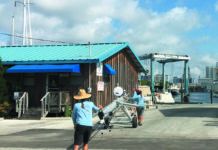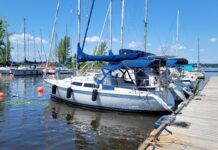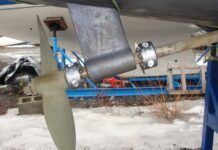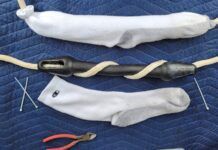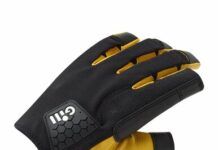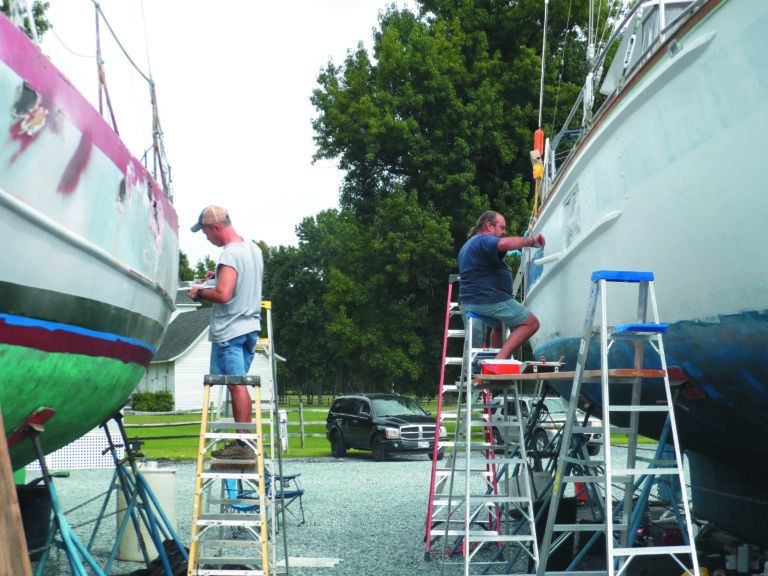
You don’t have to spend very much time in any DIY boatyard to realize that a large number do-it-yourselfers don’t give very much thought to their personal safety. Even some pros engage in practices that would make any risk manager reach for his blood pressure medication. Having a solid perch is particularly important as we age, when balance suffers and a fall can be catastrophic.
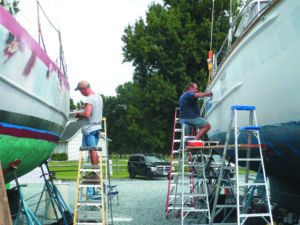
1. A scaffolding using 2 x 10 planks as walk boards is acceptable, but the lack of basic PPE like gloves and vapor protection when using high solvent paints isn’t smart. The bigger risk are the flip flops that the man on the right is wearing. Sandals are unacceptable in the boatyard.

2. Know your limits. An A-frame ladder is easy to move along a boat when scaffolding is not available. However, the risk factor goes up when you are working with power tools. Fortunately, this worker is only using the first rung.

3. Piling buckets and tools and cords on the scaffolding is asking for trouble. The scaffold should be as free as possible of any trip hazards, especially when using power tools.

4. Padding the ladder not only protects the hull from scuffs and scratches, it keeps the ladder from slipping. This ladder is well secured to the boat.
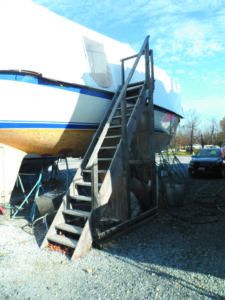
5. Stairs are much safer than ladders when a lot of heavy or bulky materials will be transferred aboard. Some yards have rolling stairs which can serve the same purpose when properly blocked to prevent them from rolling.
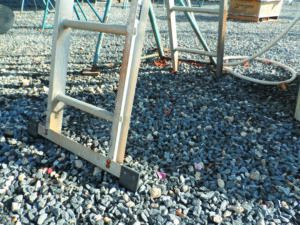
6. A wide base is a big advantage. Movie pratfalls feature a ladder falling backward, but the base slipping on an unstable surface is a serious concern in the boatyard.

7. This ladder is too steep for safe climbing. Because there is not enough rail pressure against the boat, it is at risk of falling over backwards or sliding sideways.













